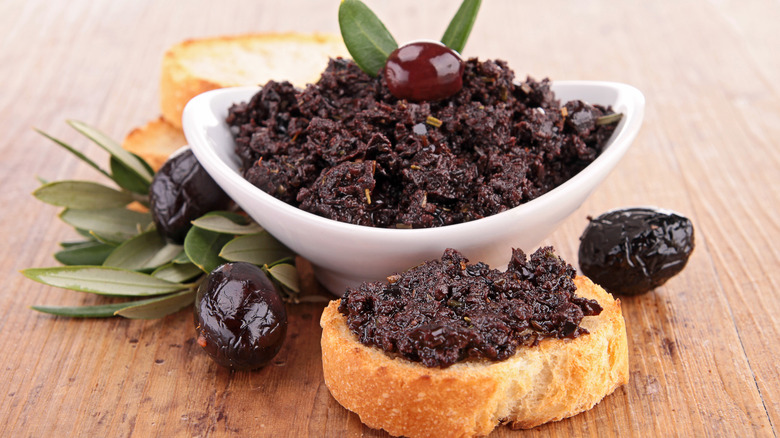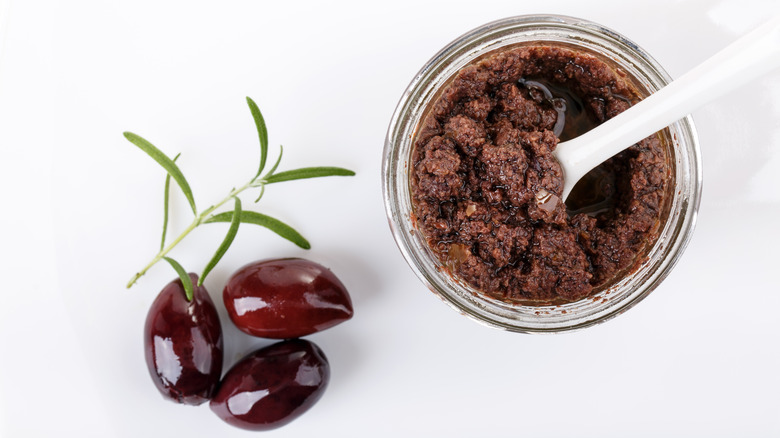What Is Olive Tapenade Actually Made Of?
Tapenade often takes a backseat to more popular spreads like hummus and pesto, but olive lovers are sure to enjoy this salty sauce. While we may associate tapenade with the olive version here in the U.S., it's actually used in southern France as a general term for a sauce that's spread on bread or pizza as an appetizer. But in the States, the uses for tapenade go far beyond that — you can spread it on a pita sandwich, dip veggies in it, mix it into a pasta sauce, or use it as a salad topping.
Because we mostly eat olive tapenade here, it generally goes well with any dish full of Mediterranean flavors. Keep in mind that it packs a lot of flavor into just one spoonful, so you typically don't need to use it much. So we know how to eat olive tapenade, but what actually is it? As you may have guessed, olives are a key ingredient. Trader Joe's Olive Tapenade uses kalamata and Chalkidiki olives, which both come from Greece and are sun-dried, pitted, and diced. But there are a few other key ingredients that make a tapenade a tapenade.
Olives and capers take center stage in tapenade
The word "tapenade" originally comes from "tapenos," the provençal word for "capers." If olives are the star of the show in tapenades, capers can be considered a supporting character. Back in the day, capers were stored in olive oil until they softened and blended with the olive flavors in the oil, thus creating a provincial version of tapenade. The original recipe for tapenade was created in 1880 in Marseille, by a chef who worked at the restaurant La Maison Dorée.
According to Sur le Sentier des Bergers, a French food brand, companies can only call their products "tapenade" if they follow this exact ratio of ingredients: 70% olives (black or green), 3% capers, .5% anchovy, a maximum of 5% ground aromatics, and olive oil — no other oils are allowed. The brand notes that it is okay to add a few drops of lemon juice or almond powder so that the olives stay acidic, but if this recipe is not followed exactly, you're left with an olive cream, not a tapenade.
Of course, Americans have slightly adapted the original recipe, and olive tapenades in the States may have extra ingredients like garlic, sundried tomatoes, roasted red pepper paste, and dried onions. But for authentic French tapenade, stick to the original recipe.

